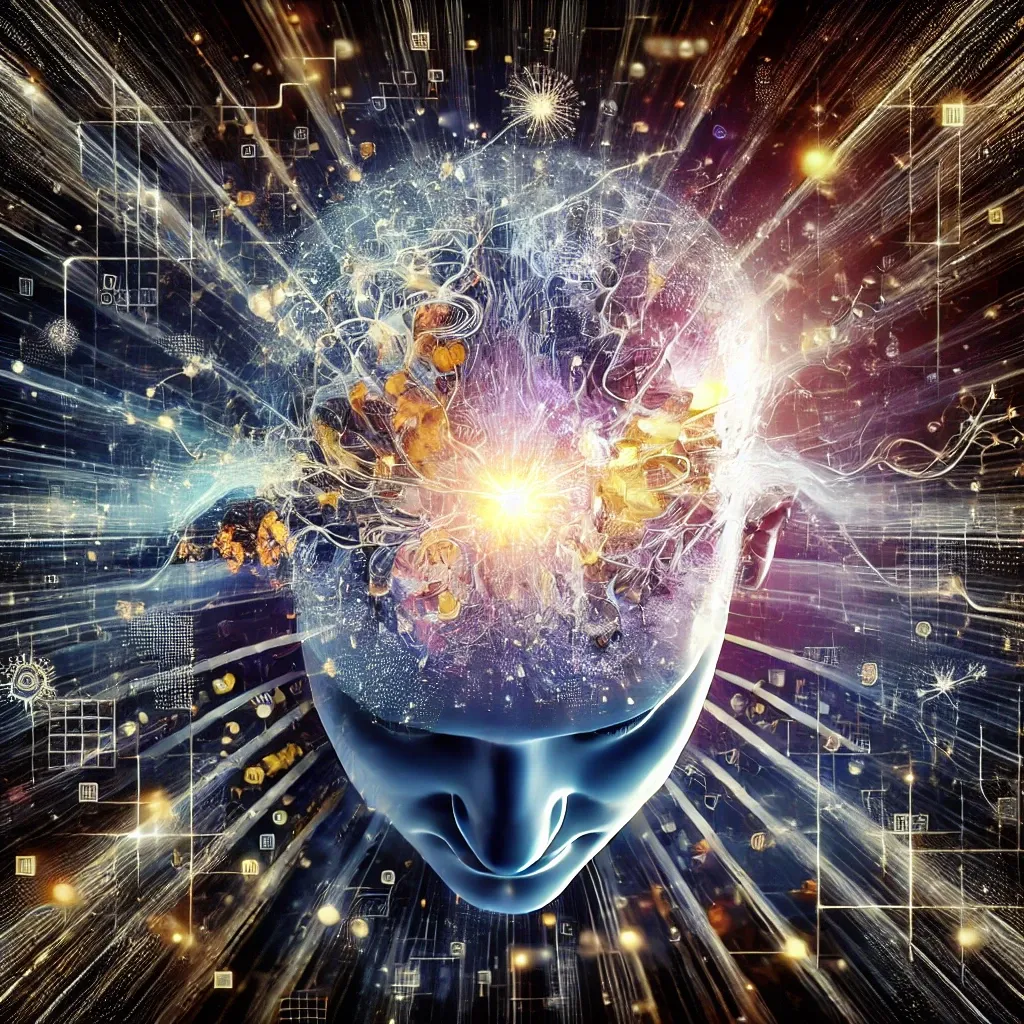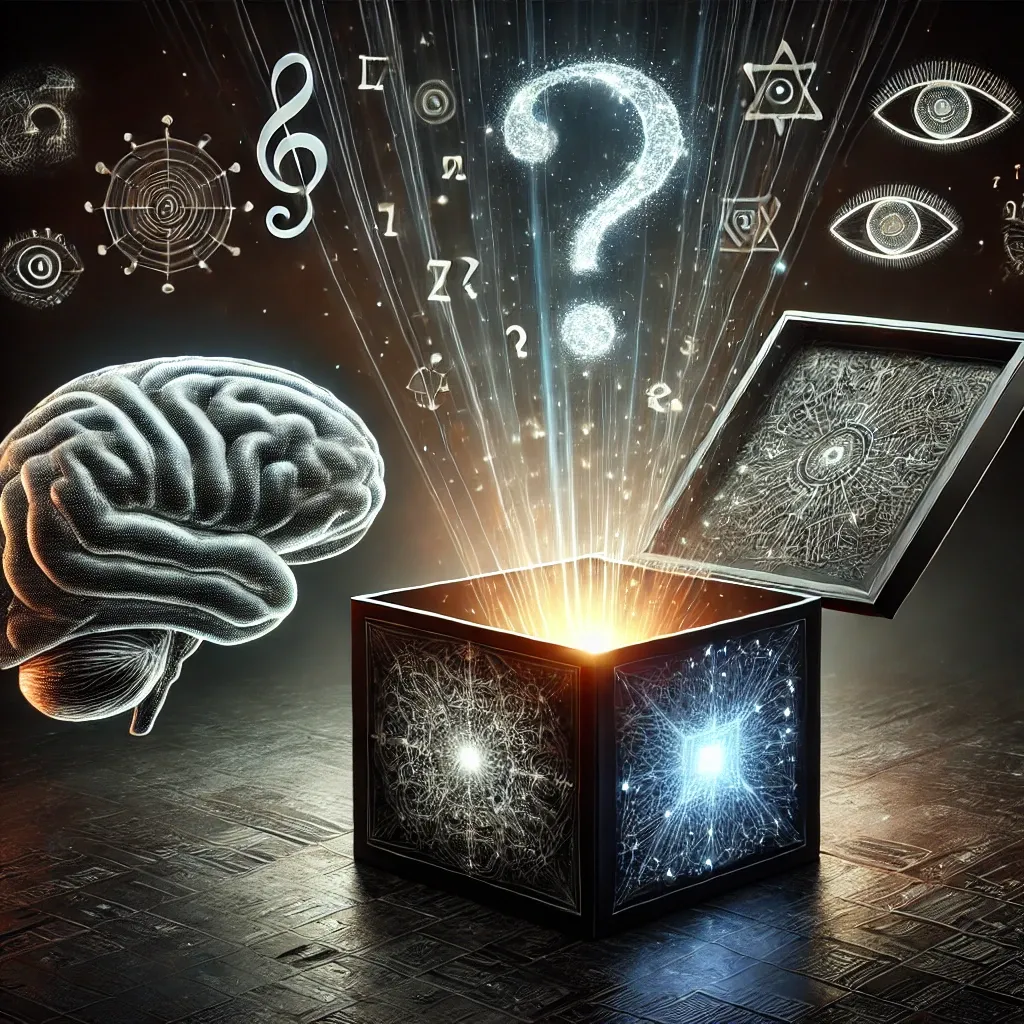What is Intelligence?
Examine the quest to understand intelligence, unveil the mysteries of our own brains, and unlock the boundless potential within artificial minds.

For centuries, humanity has grappled with the very definition of intelligence. What sets us apart? What allows us to learn, reason, and solve complex problems? From philosophical musings about the nature of the mind to the cutting-edge advancements in artificial intelligence (AI), the quest to understand intelligence has been a long and winding road. Let's embark on a journey through some key perspectives, from ancient ideas to modern theories, and even touch upon the intriguing parallels and stark contrasts between human and artificial intelligence.
Dualism and the Dawn of Understanding
Historically, the concept of a separate mind or soul, distinct from the physical body, held sway. This dualistic view, famously championed by philosophers like René Descartes, posited a fundamental divide between the immaterial realm of thought and the material substance of the brain. In Meditations on First Philosophy, Descartes argued for a "thinking thing" (res cogitans) that was separate from the extended, physical body (res extensa).
However, as our understanding of neuroscience has deepened, the interconnectedness of the brain and body has become increasingly clear. Modern science reveals a complex interplay of biological processes, neural networks, and electrochemical signals that underpin our cognitive abilities (Kandel et al., Principles of Neural Science). The "mind-body problem" is a core philosophical quandary that asks: How do subjective mental experiences—our thoughts, feelings, perceptions, and sense of self—arise from or interact with the purely physical substance of the brain and body? Is the mind an independent, non-physical entity, or is it entirely a product of physical processes? While this question remains a topic of philosophical debate, the scientific consensus leans heavily towards a monistic view, where mental processes are seen as emergent properties of brain activity. Research in fields like embodied cognition further reinforces this, suggesting that our cognitive processes are deeply shaped by our physical interactions with the world, challenging purely disembodied notions of intelligence (Barsalou, Situated Simulation in the Human Conceptual System).
This perspective leads us to consider thought experiments like the brain in a vat, famously explored by philosopher Hilary Putnam in Reason, Truth and History. If a brain, completely disconnected from a body and external sensory input, could be stimulated to experience a seemingly real world, what would that say about the nature of our own reality and intelligence? This thought experiment, echoed in the movie, The Matrix, challenges our assumptions about perception, consciousness, and the foundations of what we consider real and intelligent experience.
Representing Knowledge in a Symbolic Realm
Another perspective on intelligence is the symbolic view. This approach posits that intelligence arises from the manipulation of abstract symbols according to a set of rules. Think of language, logic, and mathematical notations. Symbol representation theory suggests that our minds (and potentially intelligent systems) operate by creating and manipulating internal representations of the external world using these symbols (Boden, Computer Models of Mind: Perspectives in Theoretical Psychology).
Early AI research heavily relied on this approach, attempting to create intelligent systems by encoding knowledge into symbolic structures and developing algorithms to reason with them. Rule-based expert systems, for instance, aimed to mimic the decision-making processes of human experts by applying logical rules to symbolic representations of knowledge. While pure symbolic AI has seen challenges, its principles still underpin areas like knowledge representation and reasoning in hybrid AI systems.
The Power of Recognition and Finding Patterns in the Noise
In contrast to the top-down approach of symbolic processing, pattern recognition theory emphasizes the ability to identify regularities and structures in sensory data. This perspective highlights how much of our intelligence relies on our capacity to learn from experience and recognize familiar patterns, whether it's identifying a face in a crowd, understanding spoken language, or predicting the trajectory of a ball (Bishop, Pattern Recognition and Machine Learning).
Connectionist models, or neural networks, are a prime example of this approach in AI. Inspired by the structure of the brain, these networks learn by adjusting the connections between artificial neurons based on the patterns they are exposed to. The dramatic rise of deep learning (a subfield of AI which uses multi-layered neural networks) and transformer models with attention mechanisms have revolutionized areas like image recognition and natural language processing (e.g., large language models like Open AI's ChatGPT and Google's Gemini), achieving performance levels that often surpass human capabilities in specific tasks. This success underscores the profound importance of pattern recognition as a cornerstone of intelligence, because such architectures are fine-tuned to detect nuances and underlying structures in images and text among other mediums.
The Brain's Symphony: A Biological Foundation
The brain-based view firmly grounds intelligence in the biological architecture and functioning of the brain. It emphasizes the complex interplay of neurons, synapses, neurotransmitters, and various brain regions in giving rise to cognitive abilities. This perspective highlights the role of neural plasticity or Hebbian learning (the brain's ability to change and adapt in response to experience) as a fundamental mechanism of learning and intelligence (Hebb, The Organization of Behavior: A Neuropsychological Theory).
While artificial neural networks draw inspiration from the brain, it's crucial to recognize that the brain is not a computer in the traditional sense. Computers, particularly those with von Neumann architectures, rely on a central processing unit (CPU) that executes instructions sequentially. In contrast, the brain operates through slow, parallel processing across billions of interconnected neurons. Information is transmitted through myelinated nerve fibers, which, while enabling relatively fast communication within the biological context, are orders of magnitude slower than the speed of electrical signals in computer chips. Furthermore, the brain's energy consumption is remarkably low compared to the power demands of modern computing systems. Recent advancements in neuromorphic computing that aim to mimic the brain's efficient architecture and processing mechanisms by way of novel chip hardware design are attempting to bridge this gap, but fundamental differences remain. The brain is profoundly more complex than any architecture that exists today (neuromorphic, von Neumann, or otherwise).
Emergence: Greater Than the Sum of Its Parts
Finally, the emergence-based theory suggests that intelligence is not simply the result of individual components or processes but rather arises from the complex interactions between them. Just as consciousness might emerge from the intricate activity of billions of neurons, intelligence could be seen as an emergent property of the dynamic interplay of various cognitive processes, sensory inputs, and embodied experiences (Holland, J. H., Emergence: From Chaos to Order).
This perspective highlights the importance of context, embodiment (the idea that our physical body shapes our cognition), and interaction with the environment in shaping intelligence. It suggests that intelligence is not a monolithic entity but rather a dynamic and adaptive phenomenon. The development of complex AI systems, particularly those that integrate multiple modalities (like vision, language, and action), increasingly aligns with this emergent view, demonstrating that sophisticated behaviors can arise from the interaction of simpler, learned components.
Human vs. Artificial Intelligence
Considering these different perspectives sheds light on the distinctions between human and artificial intelligence. While AI has made remarkable strides in areas like pattern recognition and logical reasoning, often surpassing human capabilities in specific domains, it currently lacks the broad, flexible, and embodied intelligence that characterizes human cognition.
Humans excel at tasks requiring common sense, creativity, emotional intelligence, and the ability to adapt to novel and unpredictable situations across a wide range of physical and intellectual domains. These abilities seem deeply intertwined with our biological makeup, and remain significant challenges for AI. However, the rise of large language models and generative AI has pushed the boundaries of what was thought possible for AI in terms of creative output and sophisticated language understanding, leading to renewed debate about the nature of these "intelligent" behaviors and whether they truly represent human-like understanding or merely complex statistical pattern matching. The ongoing research into explainable AI (XAI) and understanding the "black box" nature of deep learning models is a testament to the continuing quest to understand the mechanisms underlying even artificial intelligence.

The Enigma of Consciousness and the Brain's "Black Box"
Even with our advanced understanding of neuroscience, the human brain, particularly in how it gives rise to consciousness, remains largely a "black box." We can observe neural activity, map connections, and even correlate specific brain regions with functions, but the experience of consciousness (what it feels like to see red, hear music, or feel joy) is still profoundly mysterious. This is often referred to as the "hard problem of consciousness." Our inability to fully decipher how our own brains produce subjective experience and complex thought processes poses a significant challenge for the development of artificial intelligence. If we don't fully understand how our intelligence works, how can we manage artificial intelligence?
This challenge is magnified when considering advanced AI, whose internal workings, especially for complex deep learning models, can also be opaque – hence their designation as "black boxes." The content produced by machine intelligence often appears vastly different from our own, yet it may be similar in ways we don't fully understand or can't detect yet, leading to questions about shared mechanisms or entirely new forms of cognition
Different Philosophies in the Pursuit of AI
Within the realm of artificial intelligence, two primary visions guide research and development. One school of thought prioritizes the development of human-like intelligence by modeling AI systems after the intricate workings of the human mind, and draws inspiration from fields like neuroscience and psychology. Researchers in this camp strive to build systems that think, learn, and perceive in ways analogous to people, animals, or other life forms. This kind of approach aligns with what Alan Turing sought to examine in his famous test which proposed measuring machine intelligence by its indistinguishability from human intellect. Conversely, others take a more rationalist perspective, and simply concentrate on engineering agents that act optimally in whatever context they are to be harnessed. Their focus is on designing systems that consistently make the best decisions to achieve specific goals, irrespective of whether their internal processes mirror biological brains. This pragmatic path leverages tools from mathematics, statistics, and computer science.
Despite differing methodologies, both avenues contribute vital advancements to the broader AI landscape. However, bridging these methodological divides may result in significant benefits, such as the development of Explainable AI (XAI) which could be capable of articulating how and why it errs in a human-interpretable manner (perhaps allowing for alignment in both goals and values). Such convergence may be required as we seek to create AI systems that are not only powerful and efficient but also transparent, predictable, and aligned with human objectives.
Conclusion
The question "What is intelligence?" remains a profound and evolving one. By considering perspectives ranging from philosophical dualism to the emergent properties of complex systems, and by acknowledging both the similarities and fundamental differences between human and artificial intelligence, we gain a richer appreciation for the intricate nature of this remarkable phenomenon. The journey to fully understand intelligence, in all its forms, is undoubtedly a continuing adventure.
References:
- Barsalou, L. W. (2008). Situated simulation in the human conceptual system. Language and Cognitive Processes, 23(3), 512-542.
- Bishop, C. M. (2006). Pattern recognition and machine learning. Springer.
- Boden, M. A. (Ed.). (1990). Computer models of mind: Perspectives in theoretical psychology. Cambridge University Press.
- Descartes, R. (2008). Meditations on first philosophy (M. Moriarty, Trans.). Oxford University Press. (Original work published 1641)
- Hebb, D. O. (2002). The organization of behavior: A neuropsychological theory. Lawrence Erlbaum Associates Publishers. (Original work published 1949)
- Holland, J. H. (1998). Emergence: From chaos to order. Addison-Wesley Publishing Company.
- Kandel, E. R., Koester, J. D., Mack, S. H., Dudai, Y., & Siegelbaum, S. A. (2021). Principles of neural science (6th ed.). McGraw-Hill.
- Putnam, H. (1981). Brains in a vat. Reason, truth and history (pp. 1-21). Cambridge University Press.
- Russell, S. J., & Norvig, P. (2020). Artificial Intelligence: A Modern Approach (4th ed.). Pearson.
Written with the assistance of Gemini 2.5 Flash

